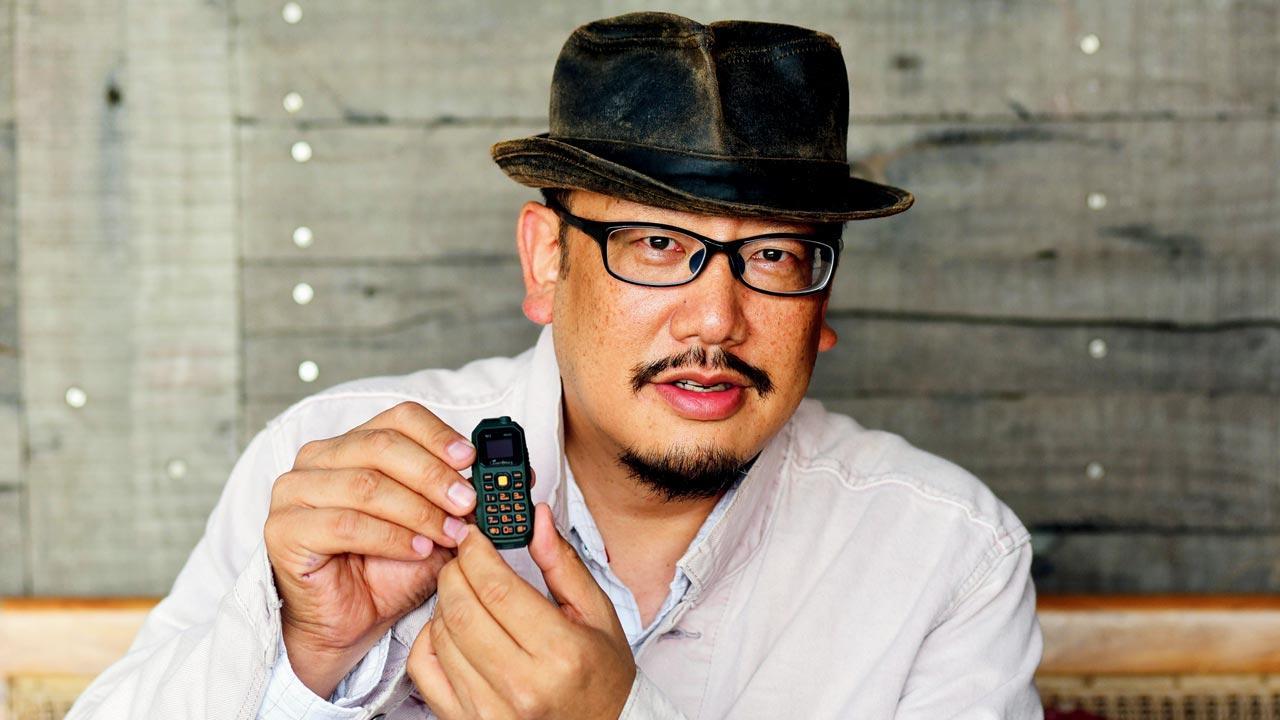The latest books to make it to our shelves are about ukeireru, which teaches us acceptance. Before this, it was ikigai and kaizen. A Japanese in Mumbai tells us why it’s worth adopting to their way of seeing life

Entrepreneur Harry Hakuei Kosato at Soho House, Juhu, discusses how concepts like acceptance, minimalism and ikigai are built into the daily lives of the Japanese. Pic/Shadab Khan
Harry Hakuei Kosato recalls the first days of helping to supply the pan-Asian fine restaurant San:Qi at The Four Seasons in Worli in 2008. “We’d get the tuna shipped from Japan. And, it was meant to be frozen through the journey. However, once, when the shipment arrived, we realised that it had been left outside in the airport, open to the heat. That was $2,500 lost. What do you do?” asks Kosato, who turned 50 last week.
ADVERTISEMENT
A loss of $2,500 (around R1 lakh as per the 2007 exchange rates), in one day would be difficult to get over. But, Kosato says, he’d shrug and accept it. That’s ukeireru (pronounced oo-kay-ray-roo) for you. The Japanese art of acceptance, recently captured in a book titled Ukeireru: Happiness and Acceptance through Japanese Wisdom by Scott Haas, a writer and a clinical psychologist, and published by Hachette India. Haas, who has previously written Why Be Happy? The Japanese Way of Acceptance, writes in Ukeireru, that the culture has several words to denote acceptance in its different forms and, while ukeireru refers to self-acceptance, it means much more. “It means acceptance of the relationships in our families, in school, at work, and in our communities. It means accepting others.”
Scot Haas
The question we put to Kosato is how are concepts such as ukeireru practiced, and nurtured in children within the Japanese tradition. In the last few years the world has opened to Japanese wisdom through the concepts of ikigai, kaizen and shinrin-yoku. Is it taught in class or is it like the haldi-milk cup that’s given
naturally during a time of ailments and looks out of place on a Starbucks menu?
Kosato laughs. The analogy seems to have hit home.
He explains that in Japan, most individuals have a “doh”, i.e. a road. “This could be kendo [swordsmanship], calligraphy, or even Western arts like the piano or ballet. A child starts this at the age of three or four and continues on the path for life. It’s here that they are taught these concepts.” For instance, ukeireru would come up when, say in a sword fight, a person loses a game. After all, you can’t win every time. At home, a child would be introduced to the concept when asked to share toys with a sibling or simply when told that they can’t always have their way. “I have a friend who is a kendo master and works in the corporate world. He will say that he has been in the industry for 20 years, but has been a kendo student for 40 years,” says Kosato. His own doh, he says, is life and business.
Showing us his phone, a Greenberry a third of the size of a fork, he says he is able to take calls from this R1,500 phone. “And for that purpose it meets my requirement. This is another Japanese concept. Don’t carry more than what you need,” he says. Not that Kosato, the director and India representative of Kikkoman, one of Japan’s largest seasoning firms, is not connected to the world. A WhatsApp message later confirms this.
Kosato finds the recent discovery of Japanese concepts like Ikigai and Kaizen, interesting. Shrouded by mystery, he feels the Western observation of their culture, throws up a contrast to a perhaps more capitalist or consumerist culture in other countries.
“Not that there are no people in Japan who hoard and are overtly consumerist, or who don’t bicker when they miss a train,” he clarifies as we make an embarrassed realisation of our own over-arching generalisation. But it’s perhaps as ingrained in their culture as the concept of fate is in ours, he explains, possibly referring to an oft-repeated consolation: “kismet mein nahin tha”. But, more than the external world, the concepts change how the Japanese are taught to interact with themselves.
Kaizen, improving every day, he says, is the realisation that you can’t be perfect and so, you have to improve every day to attain that goal. A goal which is never attainable anyway. Speaking of an octogenarian calligraphy master, Kosato says, “Every morning, he starts the day by practising the kanji [Japanese lettering] for ‘one’. It is, if you look at it, just a swish of a pen. But, this man practices it every day and has been doing this for decades, not thinking that he has achieved perfection, and perhaps never will.”
For Kosato, kaizen means ensuring a detail as small as how a diner will read the Kikkoman logo when opening a takeaway with their soy sauce. It has to be placed the right way each time.
Twenty minutes ago, this story had a few different words. And would have ended differently. But, just before the last paragraph was typed, the computer crashed. In another instance, one might have screamed or got moist eyed. Depending. But, may be we learnt ukeireru through osmosis. Practicing it saved us a lot of swear words and time—we moved on immediately and rewrote what had been lost. Acceptance is a beautiful thing.
 Subscribe today by clicking the link and stay updated with the latest news!" Click here!
Subscribe today by clicking the link and stay updated with the latest news!" Click here!






